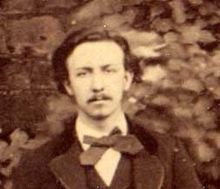Émile Nouguier
| Émile Nouguier | |
|---|---|
 |
|
| Born |
17 February 1840 Paris, France |
| Died | 23 November 1897 (aged 57) Argenteuil |
| Nationality | French |
| Occupation | Architect |
| Buildings | Eiffel Tower, Garabit viaduct and Faidherbe Bridge |
Émile Nouguier (17 February 1840 – 23 November 1897) was a French civil engineer and architect. He is famous for co-designing the Eiffel Tower, built 1887–1889 for the 1889 Universal Exposition in Paris, France, the Garabit viaduct, the highest in the world at the time, near Ruynes-en-Margeride, Cantal, France, and the Faidherbe Bridge over the Sénégal River in Senegal.
In 1861 he attended and graduated the École Polytechnique in Paris, in 1862 he joined the École nationale supérieure des mines de Paris from which he graduated in 1865 with the title of mining construction engineer.
After graduating, Émile Nouguier started to work for Ernest Goüin et Cie. and was involved in the construction of:
In 1867 Émile Nouguier was employed by Eiffel et Cie, later the Compagnie des Establissments Eiffel owned by Gustave Eiffel and between 1867 and 1893 he contributed to many construction projects:
In 1884 Nouguier and the structural engineer Maurice Koechlin, who also worked for Eiffel, came up with the idea of a large tower to act as the centerpiece of the Universal Exposition which was to be held in 1889. The two engineers consulted Stephen Sauvestre, head of the architectural division of the Eiffel company, who added embellishments including the decorative arches of the base and the glazed pavilion on the first level. The proposal was put before Eiffel, who approved the project, and presented it to the French Minister for Trade and Industry.
...
Wikipedia
